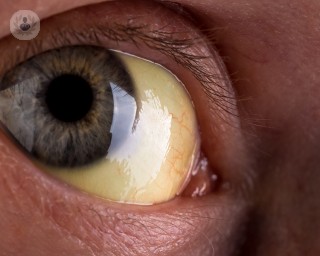La ictericia es una condición que hace que la piel y el blanco de los ojos se vuelvan amarillentas. No es una enfermedad en sí, sino un síntoma de otra cosa. Se produce cuando hay un exceso de bilirrubina.
Ictericia
La ictericia es una condición que hace que la piel y el blanco de los ojos se vuelvan amarillentas. No es una enfermedad en sí, sino un síntoma de otra cosa. Se produce cuando hay un exceso de bilirrubina.


Causes and diagnosis of the most common types of jaundice
Por Professor Roger Williams CBE
2024-12-20
When a person has jaundice, they may find that their skin and whites of the eyes turn yellow. This can occur due to different types of jaundice, each with their own causes. Here, Professor Roger Williams CBE, Director of the Institute of Hepatology, shares his expertise on the causes and diagnosis of the most common types of jaundice. Ver más


Alcoholic related liver disease (ARLD)
Por Dr Jeremy Cobbold
2024-12-19
Do you know how many alcohol units are in your glass? Alcohol is a normal and pleasurable part of social occasions, but still, we should all try to consume it in moderation. Dr Jeremy Cobbold, a hepatologist and gastroenterologist, tells you how much alcohol is bad for you, clarifies how many alcohol units are in your drinks, addresses binge drinking and provides you with tips to lower your intake. Ver más


Autoimmune Hepatitis – when the body attacks its liver
Por Professor Roger Williams CBE
2024-12-19
Autoimmune hepatitis is a serious condition in which the body attacks liver cells, therefore it prevents essential liver function. Here, Professor Roger Williams CBE explains who is most susceptible to this dangerous condition, as well as its symptoms, diagnosis and available treatment. Ver más


What causes jaundice in babies and adults?
Por Dr Deepak Joshi
2024-12-18
Jaundice is one of the most common conditions that can affect newborns with an estimated 6 out of 10 babies developing it. Even though it is much rarer, adults can develop it too. Dr Deepak Joshi, a leading hepatologist in London, explains to us the different causes in babies and adults and how it can be treated. Ver más